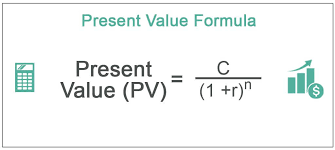Are you curious about revolving credit? You may be more familiar with it than you realize. Revolving credit refers to an open-ended credit account, such as a credit card or other “line of credit,” that can be used and paid down indefinitely. Do you still have questions? Continue reading to learn more about how a revolving line of credit business operates, the available revolving balance, and how to keep track of your accounts.
What is a Revolving Line of Credit?
A revolving line of credit is a loan that allows you to borrow money when you need it while simply paying interest on the amount borrowed. If you repay any borrowed cash before the end of the draw period, you will be able to borrow that money again. This is what keeps a credit line revolving.
Revolving lines of credit are excellent tools for your business if you require operating capital regularly to fund your company’s expansion or continuous operations. They’re also great for borrowing against your assets to cover costs or refinance high-interest debt.
How Does a Revolving Line of Credit Work?
A borrower must first be accepted for a business revolving line of credit. Once authorized, the lender will set a maximum limit for the line of credit depending on the borrower’s credit score, credit history, and income. The borrower may use the entire available cash or spend as needed.
After each billing cycle, the borrower will get a bill with the minimum payment needed. Furthermore, the borrower is only required to pay back the amount borrowed, not the entire amount of credit available. They can pay off the entire bill balance, a different amount, or the minimum payment. When a payment is made, the amount is made available for borrowing again, hence the term “revolving credit.”
Any balance carried forward to the next payment cycle will almost certainly be subject to fees and interest. Borrowers will not be charged interest if the debt is paid off by the statement due date. They are not forced to use the entire available credit limit and should only spend what is necessary. Credit card users are utilizing a revolving line of credit.
Available Revolving Line of Credit
Though a revolving line of credit is a rather particular sort of loan, the following are some examples of revolving lines of credit available in the business. Most of them are similar and need collateral worth more than the loan amount – but not all of them.
Types of Revolving Lines of Credit
Credit cards, personal lines of credit, and home equity are the three most common revolving lines.
#1. Credit Cards
A revolving credit line is available on the majority of credit cards. It enables borrowers to use available credit to purchase everyday goods and services. Each credit line has a maximum limit, an interest rate, and monthly payments.
#2. Personal Line of Credit
A personal line of credit is an unsecured loan from a bank or credit union. Borrowers access monies with special checks or electronic transfers deposited into their bank account rather than a card. A personal line of credit, like a credit card, has a credit limit, a monthly payment, an APR, and a potential fee when you use the account.
#3. Home Equity Line of Credit (HELOC)
A HELOC allows homeowners to borrow money against the equity in their homes. With this revolving line of credit, homeowners can borrow money and pay it back over and over again. A HELOC usually gives borrowers a certain amount of time to take out money before the last time they have to pay it back. A HELOC usually has a credit limit, a monthly payment, and an interest rate that can change. A reduction in house value may have an impact on the revolving credit limit.
Best Revolving Line of Credit
A business revolving line of credit allows you to borrow up to a set amount and pay interest on the amount borrowed, much like a credit card. You then reimburse the monies and can draw on the line again.
A business line of credit is more flexible financing than a standard small business loan. You receive a flat capital sum and return it with interest over a certain period. A business revolving line of credit can be utilized for a range of short-term needs, including cash flow management, inventory purchases, and payroll coverage.
Some of the best options from online and bank lenders are compared below.
#1. Citizens Bank
Citizens Bank’s HELOC is a revolving line of credit with an adjustable rate, which means your rate fluctuates depending on the prime rate. Many borrowers like the idea of a fixed rate, and Citizens’ HELOC has neither closing nor application fees. You will have to pay a $50 annual charge. Additional state-specific rate savings can save you up to 0.5% to 0.75% and another rate discount of 0.25% if you use automated payments. During the draw period, you can also choose to make interest-only or principal-only payments.
#2. US Bank Personal Line of Credit
The U.S. Bank line of credit requires you to be a bank customer, but there is no minimum asset requirement. U.S. Bank makes it simple to access your funds: use Personal Line Access checks, a Visa Access card, an ATM, online transfers, or visit a branch if you prefer a human touch.
#3. TD Bank Personal Unsecured Line of Credit
The TD Bank line of credit offers competitive rates and a variety of credit line amounts. No assets are needed for this unsecured line of credit, but there is a $25 annual fee.
#4. PenFed Credit Union Personal Line of Credit
If your credit score and history are weak, PenFed’s line of credit may be possible. While rates start as low as 5.99% APR, you won’t be able to get the best deal if your credit is poor. Still, this could be a good option if you need access to a line of credit and have the money to pay it back.
#5. Regions Bank Savings Secured Line of Credit
This is the only secured revolving line of credit on this list. Regions Bank uses customers’ savings or money market accounts as security for this product. Credit lines from $250 to $100,000 can be used to protect against overdrafts. Monthly payments are 5% of the outstanding debt, or $10. The annual cost for this account is $50.
How Do You Get A Revolving Credit Line?
The following are the processes for obtaining a line of credit:
- Locate prospective collateral. The first step in obtaining a line of credit is determining what assets you can pledge as collateral before even looking for a lender. If you can obtain collateral to secure a loan, you will be able to get considerably better conditions.
- Select a line type. Once you’ve determined what collateral you want to pledge, you can choose between a HELOC, a personal line of credit, and a credit card. Alternatively, if your company has existed for at least two years, you will most likely want a business line of credit.
- Select a lender. Different lenders specialize in various loan categories. Some internet lenders can provide you with an unsecured business line of credit. They may demand greater interest than a secured line of credit, but you should be able to obtain your money quickly after completing a brief application process.
- Apply. Applications differ depending on the lender and loan type. Some can be performed online, while others need you to visit with a loan officer or a private banker, or a credit union.
- Accept the terms and finalize the deal. Suppose you qualify for a line of credit. In that case, your lender will send you a term sheet to evaluate before accepting conditions and closing your loan. This may include signing a lien agreement pledging specific property as collateral.
You should have access to funds within a few days of closing on a line of credit. Some internet lenders may take a few days to send payments to your bank account, but others release funds as soon as the loan forms are signed.
Pros And Cons of Revolving Credit Lines for Business
Pros
- You do not pay interest until you draw money from the line.
- You only pay interest on money borrowed.
- The money is available again and again as you pay down the balance.
- Credit lines may have cheaper interest rates than other loan options.
Cons
- Some credit lines, particularly unsecured ones, have higher interest rates than secured ones and other types of loans.
- The draw time when borrowing against the line is typically 12 or 24 months; after that, the loan must be renewed – for a fee – or paid in full.
- Lines of credit cannot be converted to structured loans for repayment. If the lender refuses to renew and you can’t find another lender to refinance the loan, you may have to pay the entire balance at once.
Despite these disadvantages, revolving lines of credit provide numerous benefits that make them perfect for small business owners. You can fund significant expenses that will help your firm develop by using revolving lines of credit.
What is the Difference Between Revolving and Nonrevolving Credit?
The main distinction between revolving and nonrevolving credit is whether the credit account can be utilized repeatedly. However, there are a few more distinctions to be aware of.
#1. Open versus closed-ended:
With revolving credit, you can use the line of credit repeatedly, up to a specific credit limit, as long as the account is still open. On the other hand, nonrevolving credit allows you to borrow the amount only once. And, once paid up, the account is permanently closed. Installment credit is another name for non-revolving credit. Auto loans, home loans, and school loans are all examples of installment credit.
#2. Interest Rates:
In addition, revolving credit may have a higher interest rate than nonrevolving credit. Furthermore, with revolving credit, your minimum payment may vary based on your balance. You’ll most likely owe the same amount each payment cycle if you have nonrevolving credit.
#3. Payments:
Most non-revolving credit accounts are paid back in equal amounts at regular intervals over a certain amount. In some situations, there may be a penalty for repaying the loan ahead of time.
#4. Flexibility:
Revolving credit may also provide you with extra freedom. A credit card, for example, can be used for a wide range of transactions. But many agreements for non-revolving credit are for a single purchase, like a car or a house.
The specifics of your revolving or nonrevolving credit account may differ. Also, ensure you understand the terms of any credit agreement you enter into.
Is a revolving line of credit good?
Revolving credit is ideal if you want the freedom to spend on credit month after month without committing to a single purpose. Spending on credit cards to earn rewards points and cashback can be helpful if you pay the bill on time each month.
What is an example of a revolving line of credit?
Credit cards, personal lines of credit, and home equity lines revolve around credit. Credit cards: Many people use credit cards for routine shopping or to cover unforeseen costs.
What is the only difference between a credit line and revolving credit?
There are some distinctions between revolving credit and lines of credit. Revolving credit accounts are open until the lender or borrower closes them. On the other hand, a non-revolving line of credit is a one-time arrangement in which the lender shuts the account once the credit line is paid off.
Do revolving accounts hurt your credit?
Revolving credit, like credit cards, can hurt your credit score if not used correctly. However, using credit cards might benefit your credit score if you properly manage your credit utilization and mix.
What are the disadvantages of revolving credit?
- Their interest rates are higher than those of traditional installment loans.
- Commitment Fees Exist.
- They have less credit available to them (In Comparison to Traditional Loans)
What are the 3 types of revolving credit?
You may be familiar with three types of revolving credit accounts. Cards of credit Personal credit lines Lines of credit for home equity (or HELOC)
Conclusion
You now better understand how revolving credit works and how to manage it appropriately. Furthermore, you may be able to use your revolving credit accounts to enhance your credit score, establish a credit history, and build a more secure financial future.
Related Articles
- WHAT CREDIT SCORE DO YOU START WITH: All You Should Know
- LETTER OF CREDIT: How To Write A Good Letter Of Credit In 7 Steps (+ Detailed Guide)
- HOW TO GET A HOME EQUITY LOAN WITH BAD CREDIT
- How to Calculate Home Equity with Practical Examples & All You Need
- CONSUMER CREDIT: Meaning, Types, Pros, and Cons






